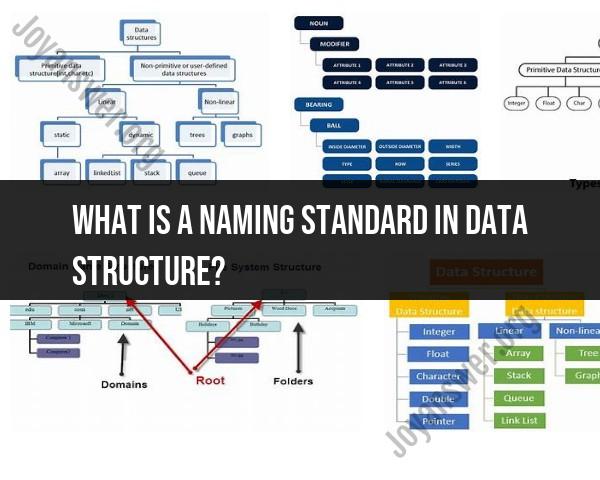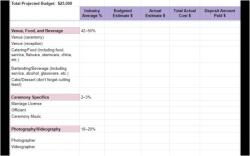What is a naming standard in data structure?
In the context of data structures and programming, a naming standard, also known as a naming convention, refers to a set of rules and guidelines that dictate how variables, functions, classes, and other elements in your code should be named. Naming standards are used to make code more readable, maintainable, and understandable by developers, including yourself and others who might work with the code.
Here are some common principles and guidelines that are typically part of naming standards for data structures and other code:
Descriptive Names: Variable and data structure names should be descriptive and reflect the purpose of the data they hold. This makes it easier to understand the code's intent. For example, if you have a data structure to store a list of customer names, you might name it
customerNamesinstead of something vague likedataorlist.Consistency: Follow a consistent naming pattern throughout your codebase. If you use camelCase (e.g.,
customerNames) for variable names, stick to it consistently. If you use underscores (e.g.,customer_names), maintain that pattern.Avoid Abbreviations: Minimize the use of abbreviations in variable names unless they are widely understood and accepted in the domain. Abbreviations can lead to confusion, especially for developers who are not familiar with the codebase.
Use Meaningful Prefixes/Suffixes: In some cases, it's beneficial to use prefixes or suffixes to indicate the data type or purpose of a variable. For example, using
strNamefor a string variable orcountto represent a count of items.Camel Case or Underscores: Choose a consistent style for multi-word variable names. Camel case (e.g.,
customerNames) and underscores (e.g.,customer_names) are the most common styles.Class Names: Class names should typically follow the PascalCase convention, where the first letter of each word is capitalized (e.g.,
CustomerList).Avoid Reserved Words: Avoid using reserved words or keywords in your programming language as variable names. This can lead to unexpected errors or confusion.
Short and Meaningful: Strive for names that are both concise and meaningful. Very long variable names can be cumbersome, but overly short names may lack clarity.
Comment for Clarity: If the purpose or usage of a variable or data structure is not immediately clear from its name, consider adding comments to provide additional context.
Avoid Ambiguity: Names should be unambiguous and not easily confused with other names in the code.
Follow Language Conventions: Adhere to the naming conventions of the programming language you are using. For example, in Python, the convention is to use snake_case for variable names, while in Java, camelCase and PascalCase are common for variables and classes.
Effective naming standards enhance code readability and maintainability, making it easier for you and others to understand and work with your data structures and code. They also promote consistency across a codebase, which is particularly important when collaborating with other developers.
Understanding Naming Standards in Data Structures
Naming standards in data structures refer to a set of rules and guidelines that dictate how to name the different components of a data structure, such as variables, functions, classes, and attributes. The goal of naming standards is to ensure that data structures are named in a consistent and descriptive way, making them easier to understand and maintain.
Importance of Consistent Naming in Data Management
Consistent naming in data management is important for a number of reasons:
- Improves readability and comprehension: Consistent naming makes data structures easier to read and understand, both for humans and machines. This can reduce the risk of errors and improve the overall quality of data management.
- Facilitates collaboration: Consistent naming makes it easier for multiple people to collaborate on data management tasks. When everyone is using the same naming conventions, it is easier to find and understand the different components of a data structure.
- Enhances maintainability: Consistent naming makes data structures easier to maintain and update over time. When names are clear and descriptive, it is easier to identify and make changes to the different components of a data structure.
Best Practices for Establishing Naming Conventions
When establishing naming conventions for data structures, it is important to consider the following best practices:
- Use clear and descriptive names: Names should be clear and descriptive, so that it is easy to understand what they represent. Avoid using abbreviations, acronyms, or other obscure terms.
- Be consistent: Use the same naming conventions throughout your data structures. This will make your data structures more readable and maintainable.
- Use standard conventions: There are a number of standard naming conventions that are commonly used in data management. Consider using these conventions to ensure that your data structures are compatible with other systems and applications.
How Naming Standards Improve Data Structure Organization
Naming standards can improve data structure organization in a number of ways:
- Help to group related elements together: Naming standards can be used to group related elements of a data structure together. For example, you could use a naming convention to group all of the variables associated with a particular object or entity. This can make it easier to find and use related elements of a data structure.
- Reduce naming conflicts: Naming standards can help to reduce naming conflicts. This occurs when two or more elements of a data structure have the same name. Naming conflicts can lead to errors and make it difficult to maintain data structures.
- Improve the overall structure of data structures: Naming standards can help to improve the overall structure of data structures. By using consistent and descriptive names, you can make your data structures more readable and maintainable.
Real-World Examples of Naming Standards in Data Management
Here are some real-world examples of naming standards in data management:
- Variable naming: Variables are typically named using a combination of letters, numbers, and underscores. The name of a variable should be descriptive of the data that it stores. For example, a variable that stores the name of a customer could be named
customer_name. - Function naming: Functions are typically named using a combination of letters, numbers, and underscores. The name of a function should be descriptive of the action that it performs. For example, a function that calculates the total price of a purchase could be named
calculate_total_price(). - Class naming: Classes are typically named using a combination of letters, numbers, and underscores. The name of a class should be descriptive of the object or entity that it represents. For example, a class that represents a customer could be named
Customer. - Attribute naming: Attributes are typically named using a combination of letters, numbers, and underscores. The name of an attribute should be descriptive of the data that it stores. For example, an attribute that stores the address of a customer could be named
customer_address.
By following these best practices and examples, you can establish effective naming conventions for your data structures. This will make your data structures easier to read, understand, maintain, and organize.












